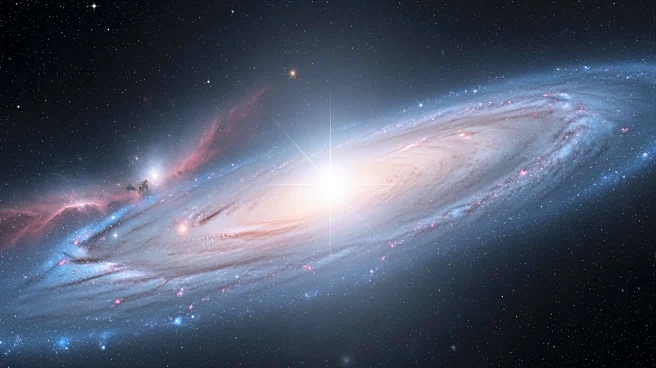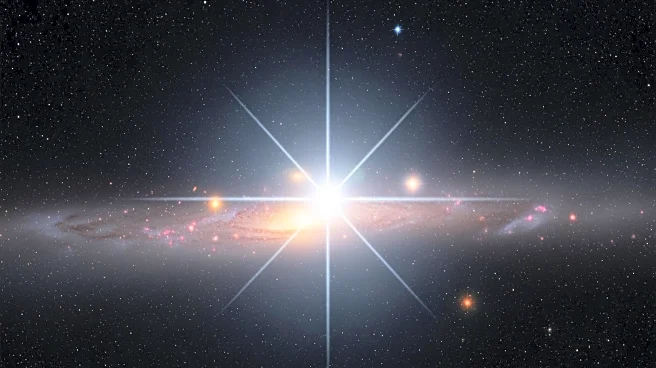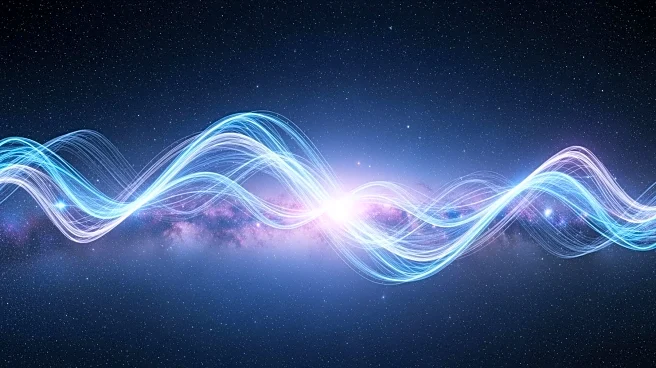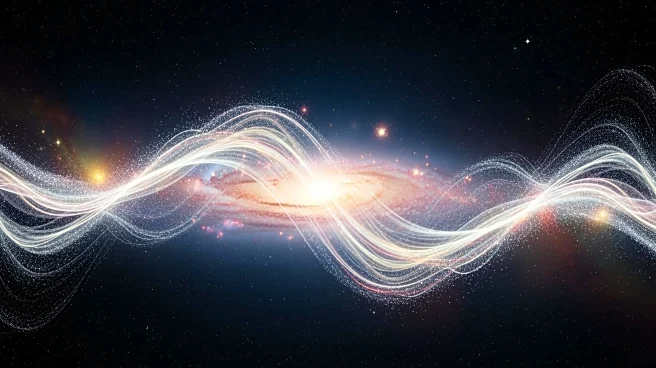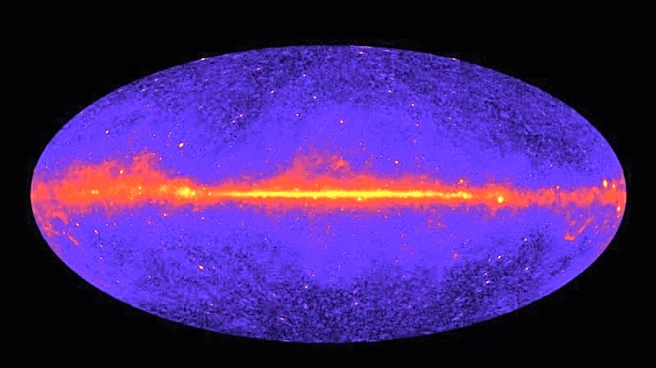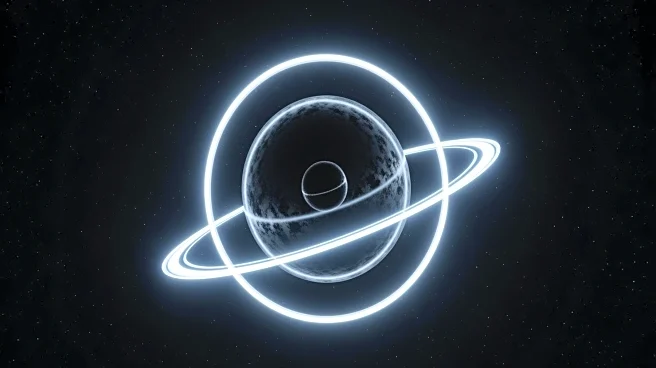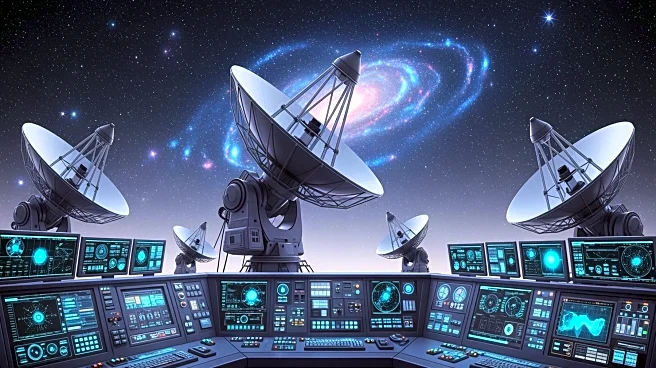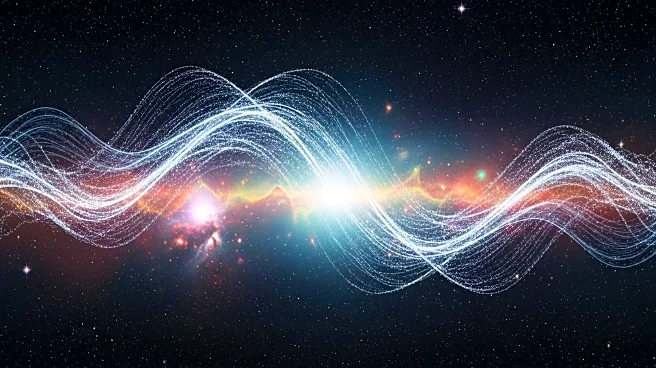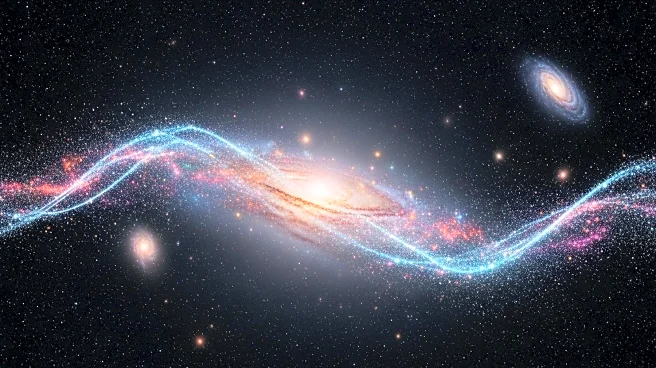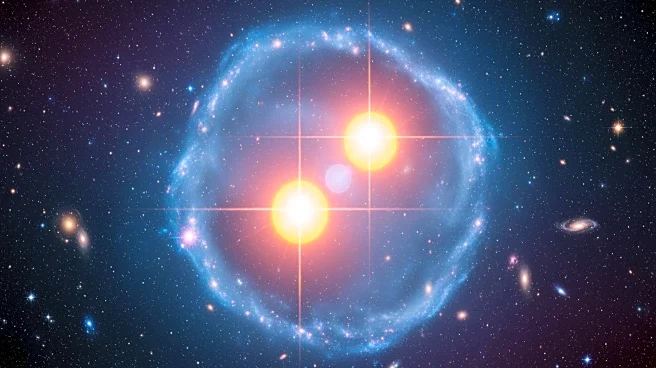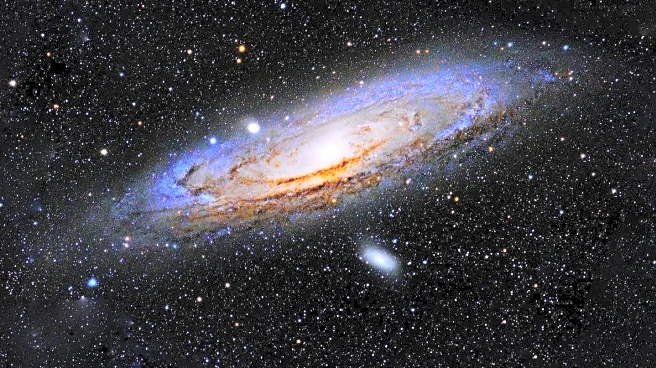What's Happening?
Astronomers have identified a star, SDSS J0715-7334, near the edge of the Milky Way that exhibits the lowest metallicity ever recorded, suggesting it may be a direct descendant of the universe's first
stars. This red giant, approximately 30 times more massive than the sun, was discovered using the MINESweeper program, which analyzes data from the European Space Agency's retired Gaia space telescope. The star's low metallicity challenges existing theories of star formation, as it contains significantly less metal than any previously observed star. Researchers believe it originated from the Large Magellanic Cloud, a dwarf galaxy orbiting the Milky Way, before falling into our galaxy. The discovery provides a unique opportunity to study the early stages of stellar evolution and the formation of metal-poor stars, which theoretically should not exist.
Why It's Important?
The discovery of SDSS J0715-7334 is significant as it offers insights into the formation of the universe's first stars, which have never been directly observed. Understanding how such metal-poor stars form could reshape current theories of star formation, particularly the 'fine structure cooling threshold,' which dictates the minimum amount of heavy elements required for star formation. This star's existence suggests alternative cooling mechanisms, such as cosmic dust, may play a role in star formation. The findings could impact our understanding of the early universe and the processes that led to the creation of stars and galaxies, providing a window into the conditions following the Big Bang.
What's Next?
Researchers will continue to study SDSS J0715-7334 to better understand its origins and the mechanisms that allowed its formation despite its low metallicity. Further analysis may reveal more about the role of cosmic dust in cooling gas clouds, potentially leading to revisions in star formation models. The study of this star could also prompt additional searches for similar stars, offering more data to refine theories about the early universe. Collaboration among astronomers and astrophysicists will be crucial in exploring these new avenues of research.
Beyond the Headlines
The discovery of SDSS J0715-7334 raises questions about the ethical implications of scientific exploration and the allocation of resources in space research. As astronomers push the boundaries of knowledge, considerations about the environmental impact of space missions and the prioritization of research funding become increasingly relevant. Additionally, the cultural significance of understanding our cosmic origins may influence public interest and support for scientific endeavors.
